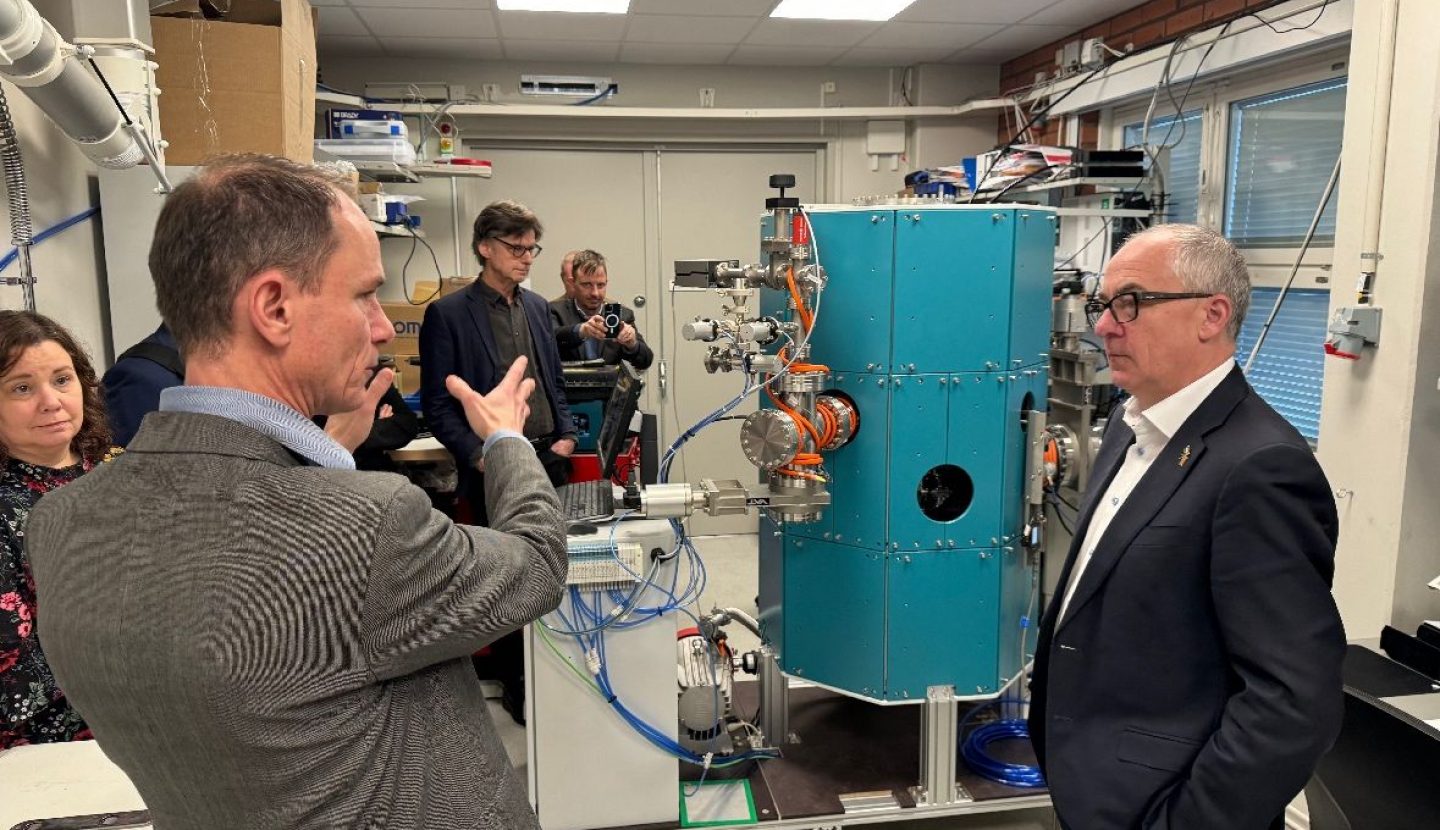Novatron Fusion Group has welcomed a high-level UK delegation including world renowned particle physicist and Executive Chairman of the UK’s Science & Technology Facilities Council (STFC) Professor Mark Thomson.
It came just hours before the UK government named Thomson as its official candidate for the next Director-General of CERN – the European Organization for Nuclear Research, and home to the Large Hadron Collider. A vote among CERN member states takes place later this year.
Professor Thomson toured Novatron Fusion Group’s first official test facility, the N1, at KTH Royal Institute of Technology in Sweden – which will feature the world’s only stable mirror-machine fusion energy concept, and the only mirror machine-concept in Europe. The facility is due to launch this summer.
The Novatron concept allows plasma to oscillate between two magnetic mirrors as its heated to more than 100 million degrees Celsius. The approach aims to simplify the quest to deliver fusion energy while reducing capital cost of fusion reactors by half, compared to other solutions in experimental development, such as the Tokamak. Engineers recently completed a complex multi-system integration project to create plasma, via an experimental test rig, marking a Scandinavian first and raising ambitions for the Nordics’ fusion energy sector.
Novatron Fusion Group CEO Peter Roos said it was a privilege to welcome the UK delegation which also included Chris Matthews, Head of International Research Infrastructures, from the UK’s Department for Science, Innovation and Technology (DSIT). They were joined by Craig Jantzen, First Secretary & Regional Manager for the Science & Innovation Network, covering Nordic Baltic region, operating under the UK Foreign, Development & Commonwealth Office. The visit was supported by the Swedish Research Council and British Embassy in Stockholm.
“We were thrilled to welcome our UK colleagues including Professor Thomson who is one of the most accomplished particle physicists of our generation,” said Peter. “It’s the latest in a series of high-profile tours to our rapidly advancing N1 test site demonstrating global interest in Novatron Fusion Group and our novel technology.
“We shared our design principles for stable magnetic plasma confinement, and the Novatron, based on the idea by Swedish inventor and entrepreneur Jan Jäderberg. The concept aims to minimize problems with plasma instabilities which have obstructed commercial advancement of fusion energy. We also addressed the importance of utilizing state-of-the-art technology in collaboration with world-leading physicists, engineers and academia, to develop economically viable commercial fusion energy, while streamlining nuclear engineering and reducing current capital and operational costs of future fusion reactors.”
As Executive Chair of STFC (the UK Research Council which provides funding for particle physics, astrophysics, space science and nuclear physics) Professor Thomson manages an annual budget of circa £900 million, and around 2,500 scientific and technical staff.
A Professor of Experimental Particle Physics at the Cavendish Laboratory at the University of Cambridge as well as a Fellow at Emmanuel College, Cambridge, he has more than two decades experience working on CERN projects. In addition, he has authored or co-authored over 1,100 pieces of peer-reviewed research, and his textbook ‘Modern Particle Physics’ is a staple on undergraduate courses worldwide.
“It was a pleasure to visit colleagues at the Vetenskapsrådet / Swedish Research Council this week and to learn about the exciting developments taking place across their facilities,” said Professor Thomson. “In particular, it was a privilege to tour the Novatron Fusion Group AB, Kungliga Tekniska högskolan labs and see first-hand the strides they are making in evaluating the technology required to stabilise plasma fusion. Fusion energy is one of the most exciting frontiers in physics and a priority of STFC and our Central Laser Facility. It’s great to see so much progress being made in fusion energy research internationally and we will continue to share our insights and findings going forward to develop the field even further.
“STFC has a longstanding relationship with our Swedish colleagues through our support for initiatives such as the European Spallation Source ERIC and collaborations including valuable contributions from the Swedish Research Council to the Polaris and IMAT instruments at our ISIS Neutron and Muon Source. I look forward to continuing in this vein long into the future.”
In October 2023, Swedish Prime Minister Ulf Kristersson and UK Prime Minister Rishi Sunak signed a strategic partnership to expand cooperation on security and defence. Fusion energy featured as part of the increased cooperation. The nine-page document which included a broader section on Energy, says the UK and Sweden will ‘explore further opportunities for collaboration on fusion energy’ after welcoming ‘recent exchanges, at political level, (which) acknowledge fusion energy could be important for long-term sustainable energy supply”.
The coming years will profoundly shape CERN’s future as the premier international centre for particle physics, as the organisation delivers a major upgrade to the Large Hadron Collider – one of the world’s most complex and technically sophisticated scientific experiments.





